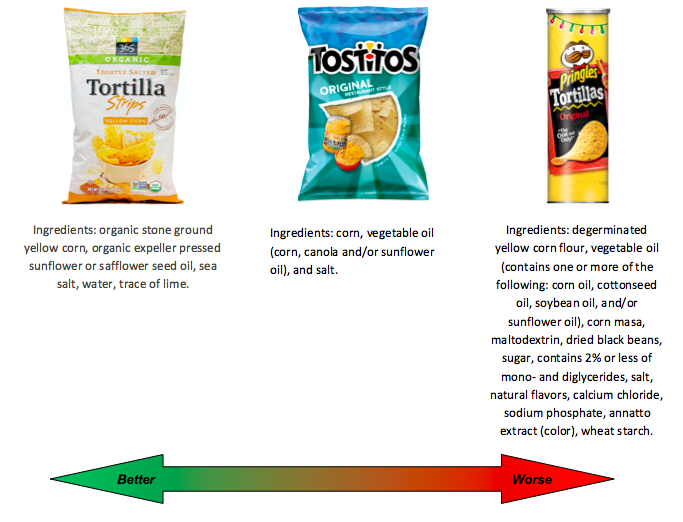Lab Created Foods Dominate our Diet
It’s no surprise that eating well is highly challenging in today’s modern world. Food is advertised and offered everywhere. Big money in the food industry is spent perfecting the appeal – message, taste, and satiety – of the processed foods that now dominate the American diet. All the while, food allergies and food sensitivities have increased among the women we train at our personal training studio.
According to an article published earlier this year in BMJ open, 58% of the energy (i.e. calories) Americans eat comes from ultra-processed foods. These foods are created in a lab, and contain salt, sugar, oils/ fats, chemicals, and additives that imitate the qualities of real foods.
In addition, food plays a starring role in how we socialize. Deviating from accepted traditions or social expectations for eating and drinking can bring us under fire from well meaning friends and loved ones.
Combine this with the over burdened lifestyle common in major US cities–work, family, technology, chores, social obligations, and traffic fill every minute, leaving little time for shopping, prepping, and preparing foods at home.
In short, the deck is heavily stacked against us and our intent to have a healthy diet.
Healthy Eating Mindset Tips
For me, the first step in managing my eating strategy is to acknowledge and accept the realities of the situation.
Second, I make eating whole natural foods a priority, while realizing that I will not be able to eat this way in certain situations.
Third, I listen to my body and follow what it’s telling me in terms of food preferences. I would not be successful by forcing myself to eat foods I don’t truly enjoy. I ask myself, within the realm of foods that came from the earth, which are the ones I most enjoy?
Fourth, how can I purchase, prepare, and store these natural foods to support my goals?

MAKE NUTRITIOUS EATING A FOREVER LIFESTYLE
Here are some great strategies for making eating nutritious food a forever lifestyle and not a short term diet:
1) Prepare fresh food and have it ready to add to meals, for snacks, or to take with you on days you’ll be out of the house.
- Red, orange, yellow or green peppers, carrots, celery, cucumber, and broccoli florets can be cut into bite size pieces for on the go healthy snacking.
- Plan meals where vegetables play the starring role:
- Lettuce, tomato, onion, and peppers can be chopped and ready to add on top of beans, chicken or beef for fast Mexican at home. Add mashed or sliced avocado for a healthy fat.
- Ready to eat spinach can be topped with pecans, bee pollen, chopped apple, a sprinkle of Feta cheese, olives, and a teaspoon of drizzled Olive Oil or honey for a fast salad.
- Snap peas, green beans, peppers, mushroom, and broccoli can be washed and prepped for a quick at-home Asian-themed stir fry.
2) Keep it visible – on countertops and what you see when you open the refrigerator.
- On the flip side, place processed and unhealthy foods in closed cupboards and high shelves or, better yet, simply don’t keep them at home.
3) Regularly shop for fresh food. TEST – does this grow on Earth or come from nature?
4) Eliminate as many processed foods as possible. For those you do buy, check and compare the list of ingredients and opt for brands with less total ingredients. Aim to eliminate or reduce processed foods with added chemicals, artificial colors, added sugars, added flavor, and ingredient names you cannot pronounce.
5) Be aware of portion size. If you have specific foods you love, but that are not healthy choices – go ahead and enjoy them, but do so in moderation. When you enjoy these foods, savor them and focus on their flavor and texture. One trick to help you stick to this is to buy individual size bags of these unhealthy foods. It’s much easier to realize you’ve had too many chips if you’re opening a third small bag than it is if you’re eating out of a party sized bag.
6) Pay close attention to your body, and stop eating when you are satisfied rather than full. Follow the Okinawan rule “Hara Hachi Bu”, which instructs people to eat until they are 80% full. It takes the brain time to process the sensation of being full. Given the lag between the brain and stomach, eating to 80% actually means we are eating to being full, rather than overstuffing ourselves.
7) Opt out of food advertising – turn the channel, walk out of the room, turn the page. Major companies and powerful brands are spending significantly to sell their products, but we must train our brains to love and crave the foods that are truly best for us.
8) Avoid foods that are designed to trick our minds into overeating. Foods that combine and balance multiple flavors so that no single flavor lingers (such as Chips, Doritos, and Diet Coke) turn off the brains built in mechanism for flavor satisfaction, which results in over-eating. Foods that dissolve/ melt into nothing (i.e. Cheetos, cotton candy, etc) use vanishing caloric density to trick our minds into thinking we’ve consumed nothing. And, in a way, we haven’t consumed anything but empty calories due to the lack of nutrition within these processed foods. This leaves us with a feeling of hunger and may even trigger cravings for more of these empty calories. (http://recipes.howstuffworks.com/vanishing-caloric-density.htm).
Make the Best Decisions for You and your Family
As a mom, navigating the world of processed food is a big challenge. Using these strategies may reduce your and your family’s risk of gaining weight, suffering from disease, and suffering decreased quality of life. Doing so will help you feel confident that you’re making the best decisions for yourself and for your family.
If you have strategies that work for you, share them with us in the comments below. Let’s all support each other in this uphill battle!

Michelle Berkley, NASM-CPT
Rock Fit Personal Trainer


